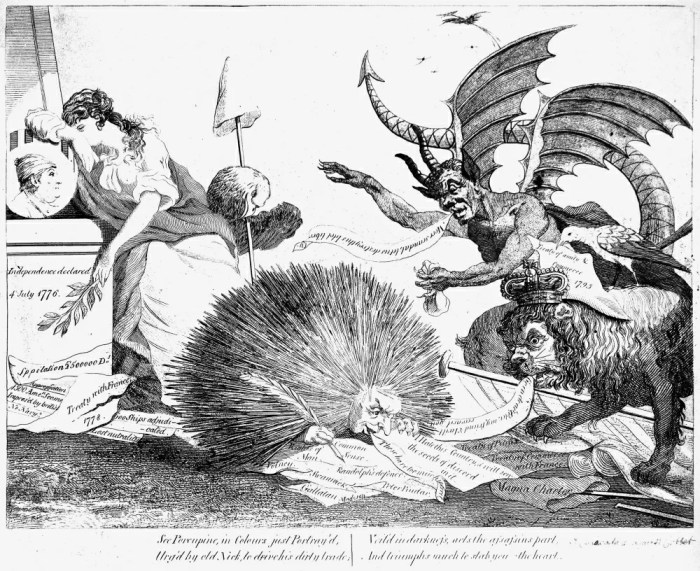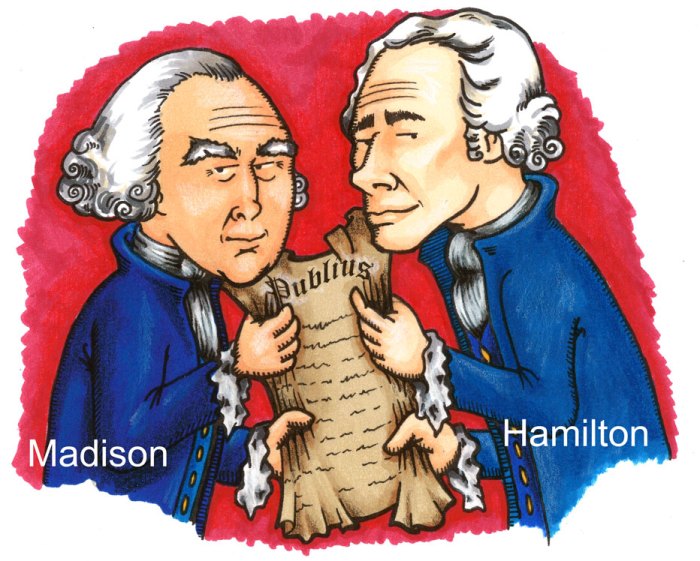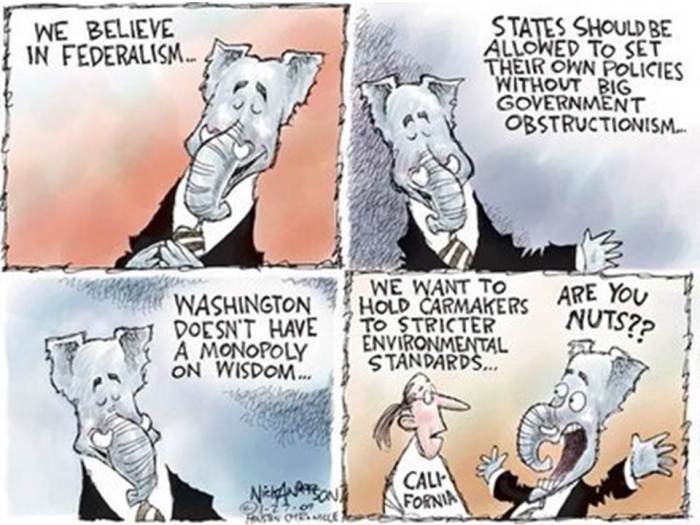Federalist anti federalist political cartoons – Federalist and Anti-Federalist political cartoons emerged as powerful tools in the fierce debate over the ratification of the U.S. Constitution. These visual polemics, crafted with wit and symbolism, played a pivotal role in shaping public opinion and influencing the course of American history.
Federalist cartoons, championed by proponents of a strong central government, employed allegory and satire to extol the virtues of unity and national strength. Anti-Federalist cartoons, on the other hand, raised concerns about the potential tyranny of an overreaching federal government, using vivid imagery to depict the dangers of unchecked power.
Federalist Political Cartoons: Federalist Anti Federalist Political Cartoons

Federalist political cartoons emerged during the ratification debates of the U.S. Constitution in the late 18th century. These cartoons were created by supporters of the Constitution, who sought to persuade the public of its benefits and necessity.
Examples of Federalist Political Cartoons
- The Federal Ship:Depicted the Constitution as a ship, with George Washington at the helm, sailing through stormy seas, representing the challenges faced by the new nation.
- The Eagle and the Serpent:Symbolized the United States as a majestic eagle, protected by the Constitution from the serpent of tyranny.
- The Tree of Liberty:Portrayed the Constitution as a tree, providing shade and protection for the American people.
Symbolism and Messages, Federalist anti federalist political cartoons
Federalist political cartoons often employed allegory and symbolism to convey their messages. They depicted the Constitution as a symbol of unity, strength, and protection. They emphasized the importance of a strong central government to maintain order and security, and portrayed opponents of the Constitution as disloyal or even treasonous.
Anti-Federalist Political Cartoons

Anti-Federalist political cartoons were created by opponents of the Constitution, who argued that it would lead to tyranny and the erosion of individual liberties. These cartoons emerged in response to the Federalist campaign for ratification.
Examples of Anti-Federalist Political Cartoons
- The Federal Leviathan:Depicted the Constitution as a monstrous sea creature, threatening to devour the American people.
- The Snake and the Eagle:Symbolized the Constitution as a serpent, coiled around the American eagle, representing the danger it posed to liberty.
- The Handwriting on the Wall:Portrayed the Constitution as a document inscribed with the ominous words “mene, mene, tekel, upharsin,” foretelling doom and destruction.
Symbolism and Messages, Federalist anti federalist political cartoons
Anti-Federalist political cartoons often employed exaggeration and satire to convey their messages. They depicted the Constitution as a threat to individual rights and freedoms. They emphasized the importance of states’ rights and local autonomy, and portrayed proponents of the Constitution as power-hungry elitists.
Comparison of Federalist and Anti-Federalist Political Cartoons

Federalist and Anti-Federalist political cartoons differed in their styles, techniques, and perspectives. Federalist cartoons tended to be more optimistic and patriotic, while Anti-Federalist cartoons were often more pessimistic and critical.
Styles and Techniques
- Federalist:Allegorical, symbolic, often featuring classical imagery.
- Anti-Federalist:Exaggerated, satirical, often using humor and caricature.
Perspectives and Arguments
- Federalist:Emphasized the benefits of a strong central government, argued for ratification.
- Anti-Federalist:Warned against tyranny, advocated for states’ rights, opposed ratification.
Effectiveness
Both Federalist and Anti-Federalist political cartoons played a significant role in shaping public opinion during the ratification debates. They helped to inform and persuade voters on both sides of the issue, and contributed to the lively and contentious political atmosphere of the time.
Historical Significance of Federalist and Anti-Federalist Political Cartoons

Federalist and Anti-Federalist political cartoons had a profound impact on American history and political culture. They contributed to the debate over the ratification of the Constitution and helped to define the contours of American political discourse.
Role in the Ratification Debates
The cartoons were a powerful tool for both sides in the ratification debates. They helped to mobilize support for and opposition to the Constitution, and influenced the outcome of the ratification process.
Impact on American Political Culture
The cartoons helped to establish a tradition of political satire and commentary in the United States. They also contributed to the development of a national identity, as they reflected the hopes, fears, and aspirations of the American people.
Legacy
Federalist and Anti-Federalist political cartoons remain a valuable source of information about the ratification debates and the political culture of the late 18th century. They continue to be studied and debated by historians and political scientists today.
FAQs
What were the key differences between Federalist and Anti-Federalist political cartoons?
Federalist cartoons emphasized the benefits of a strong central government, while Anti-Federalist cartoons warned against the dangers of unchecked federal power.
How did political cartoons influence public opinion during the ratification debates?
Cartoons were widely circulated and accessible to a broad audience, making them a powerful tool for shaping public opinion and mobilizing support for or against the Constitution.
What is the historical significance of Federalist and Anti-Federalist political cartoons?
These cartoons provide valuable insights into the political debates and social attitudes of the late 18th century and continue to serve as a reminder of the importance of visual rhetoric in shaping historical events.